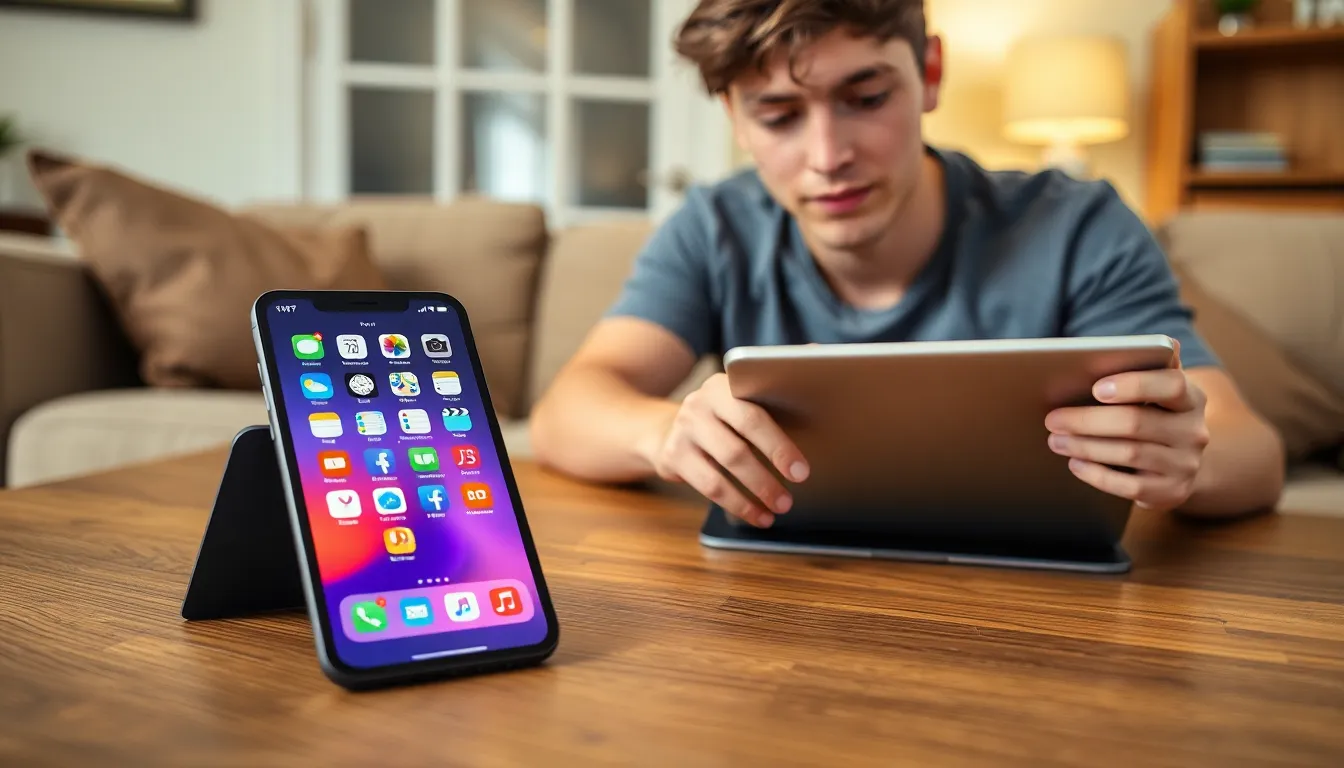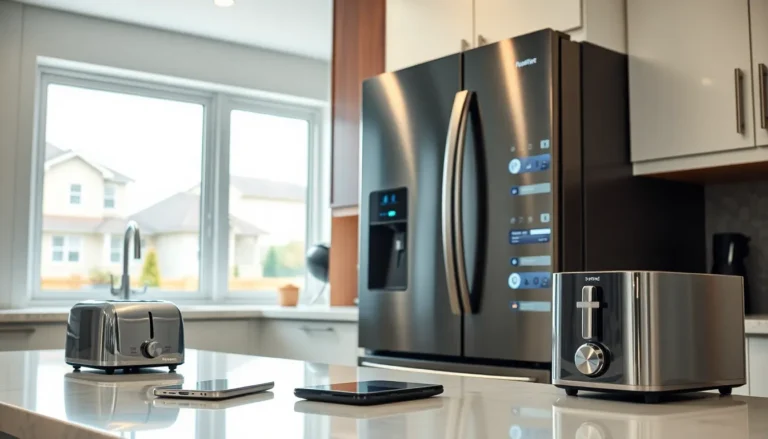Table of Contents
ToggleImagine this: you’re lounging on your couch, iPhone in hand, and suddenly realize your iPad could use some of that sweet, sweet content. Whether it’s sharing a hilarious video or showcasing your latest app obsession, screen sharing between an iPhone and iPad can turn that dream into reality. It’s like having a mini cinema right in your living room—minus the overpriced popcorn.
Overview of Screen Sharing
Screen sharing allows users to display one device’s screen on another. Sharing content between an iPhone and an iPad offers various opportunities for entertainment and collaboration. Whether streaming videos or demonstrating apps, this feature creates a more immersive experience.
Apple’s built-in AirPlay technology supports seamless screen sharing. By utilizing AirPlay, an iPhone connects to an iPad without complicated setup processes. Users can send images, videos, and other content quickly and efficiently.
Accessing the screen sharing option begins in the Control Center. Swiping down from the top right corner of the iPhone reveals necessary options. Selecting “Screen Mirroring” presents a list of available devices. Choosing the iPad from the list establishes a connection.
Sharing experiences enhance interactions during presentations or entertainment. Friends can view the same movie while sitting in different locations. Families can enjoy video calls with shared visuals, making conversations feel more connected.
Adjustments may be needed for optimal performance. Streaming high-definition content might require a strong Wi-Fi connection. Users should ensure both devices remain updated to the latest iOS version. Compatibility effects playback quality, so keeping devices current is essential.
Screen sharing also benefits educational and professional settings. Teachers can display instructional material, while colleagues can showcase presentations. This functionality fosters collaboration in various environments, enhancing productivity and engagement.
Requirements for Screen Sharing

Screen sharing between an iPhone and iPad requires specific devices and software configurations. Ensuring compatibility and having the right tools greatly enhances the experience.
Compatible Devices
Both devices need to run current iOS versions. iPhone models from 6s onwards work with screen sharing. iPads released from the 5th generation and later also support this feature. Moreover, devices must support AirPlay, Apple’s wireless streaming technology. Users should check device compatibility by verifying iOS or iPadOS versions beforehand. Confirming that both devices are on the same Wi-Fi network simplifies the connection process.
Necessary Software
The latest iOS or iPadOS version remains essential for seamless integration. Users should enable AirPlay settings through the Control Center. It allows easy access to screen sharing options. Additionally, both devices may need to support specific apps that facilitate sharing. Users benefit when apps are updated to their latest versions, enhancing performance and compatibility. Checking for software updates regularly ensures that device functionalities stay optimized for screen sharing.
Step-by-Step Guide to Screen Share iPhone to iPad
Screen sharing between an iPhone and an iPad can enhance entertainment and collaboration seamlessly. Follow these steps to achieve effective screen sharing.
Using AirPlay
Using AirPlay simplifies the screen sharing process between devices. First, swipe down from the top-right corner of the iPhone to access the Control Center. Then, tap on “Screen Mirroring” and select the iPad from the available devices list. Once connected, the iPhone screen displays on the iPad, allowing users to share content, such as videos and images, easily. Remember, both devices must connect to the same Wi-Fi network for optimal performance. Regular updates to iOS can enhance connectivity and functionality when using AirPlay.
Using Third-Party Apps
Third-party apps provide additional options for screen sharing. Popular applications like ApowerMirror and TeamViewer offer versatile solutions for users. After downloading the chosen app on both devices, follow the on-screen instructions to establish a connection. Many of these apps feature user-friendly interfaces that facilitate the sharing process. They can also support various content types, including presentations and documents, making them suitable for professional environments. Confirm that both devices remain on the same Wi-Fi network to ensure a smooth experience.
Common Issues and Troubleshooting
Users often encounter a few issues while screen sharing between iPhone and iPad. Identifying these problems quickly can lead to smoother experiences.
Connection Problems
Connection issues frequently arise when devices aren’t properly connected. Both devices must be on the same Wi-Fi network for effective pairing. Users should verify that Wi-Fi is enabled and functioning correctly. If the iPhone fails to locate the iPad, restarting both devices usually resolves the issue. Additionally, checking for software updates ensures compatibility. If problems persist, disabling and re-enabling AirPlay in the Control Center can refresh connections, often bridging any gaps in communication between the devices.
Quality Issues
Quality problems can affect viewing experiences during screen sharing sessions. Low video quality often stems from weak Wi-Fi signals. Users should position devices closer to the router to enhance signal strength. Furthermore, high traffic on the network can deteriorate performance. Consider limiting other device connections while screen sharing for optimal results. Users may also need to check for compatibility issues with video formats. Confirming that the content shared is supported by both devices helps maintain playback quality. Regularly updating the iOS versions can also improve overall performance.
Screen sharing between an iPhone and iPad opens up a world of possibilities for entertainment and collaboration. By leveraging AirPlay technology users can effortlessly share content and create memorable experiences. Whether it’s enjoying a movie night with friends or facilitating a productive meeting the ability to display one device’s screen on another enhances engagement and interaction.
Ensuring both devices are updated and connected to the same Wi-Fi network is crucial for a seamless experience. With the right tools and a few simple steps users can maximize the benefits of screen sharing. Embracing this feature not only enriches personal interactions but also elevates professional collaborations making it a valuable skill for anyone looking to connect and share effectively.





